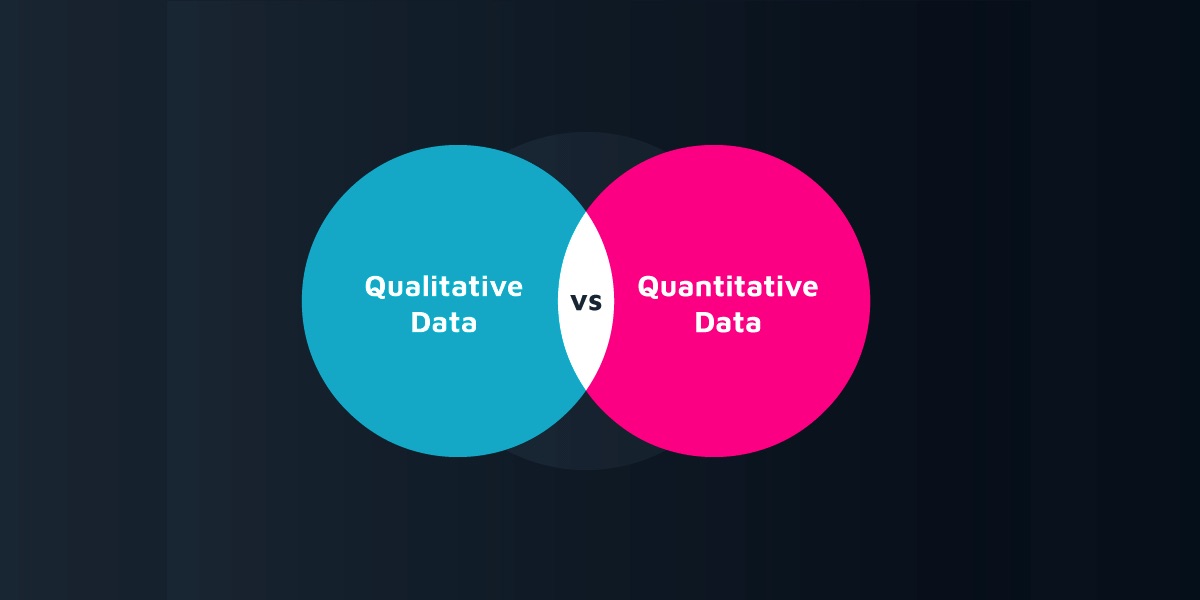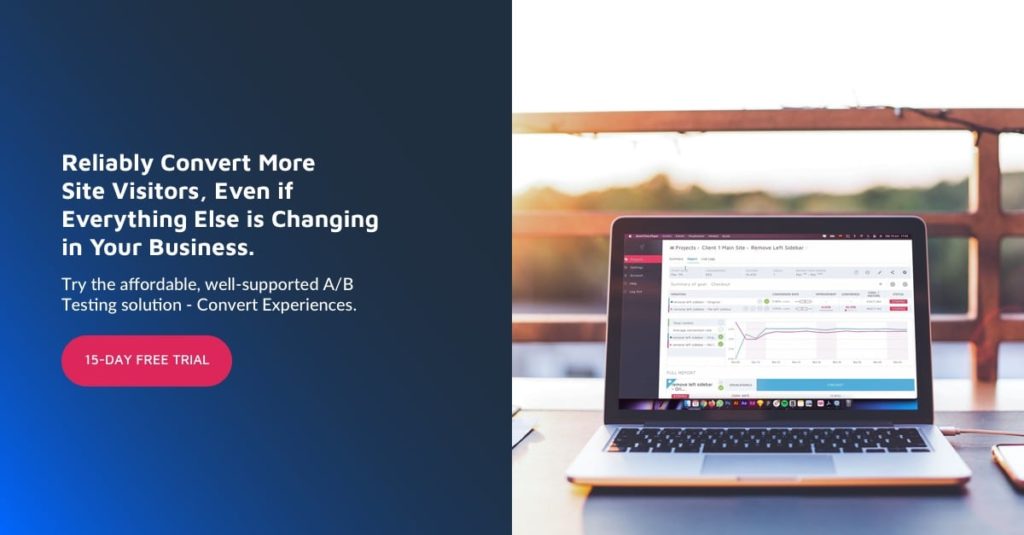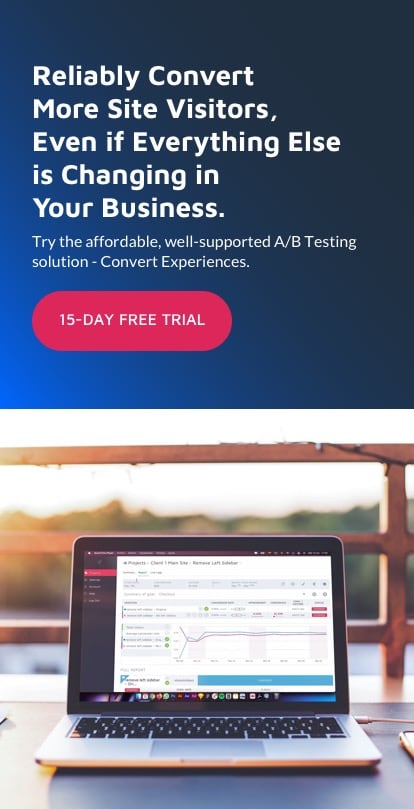Qualitative data and quantitative data are two different kettle of fish. Period.
But when we are asked to explain the “what” and the “why”, it gets a little bit more complicated.
When should I go for quantitative questions when framing my hypotheses? What about the qualitative data? When does it enter the picture?
As Andrew Chen puts it, “if you’re not going to do something about it, it may not be worth measuring.”
The sole purpose of this article is to shed light on the differences between qualitative and quantitative data in the context of marketing and optimization.
Without further ado, let’s dive right in.
Qualitative Data Definition
Qualitative data is usually expressed by means of sentences and natural language description. Not by numbers.
When referring to qualitative data in customer feedback, we call it verbatim or the voice of the customer.
It gives you the WHY, the reasons behind the figures. It gives you the explanation, take the guesswork out of knowing what their feedback is instead of just looking at data.
Customers have little or no attention span, they expect you to do more to earn their limited time.
That’s where you need to be creative.
Make it easy for your customer to answer, and open the dialogue.
Then, you can get the qualitative data out.

Catch the customer when he is more likely to give you an answer: exit surveys, on-site feedback, phone calls, use retargeting, and much more creative ways to get feedback.
But you can also be even more outstanding and offer a reward to your respondent. After all, they are spending time for you.
It would not be such a bad idea to use a survey incentive. Nothing too big, a simple win-win type of scenario.
It is very useful in order to get into the why, and truly uncover the motivations of your customers.
Ask why they did certain things on your site or why they didn’t do certain things. Ask about the emotions they have regarding what your business provides. See if you can figure out any unaddressed frustrations.
When To Use Qualitative Data?
Let’s cover some of the types of qualitative data.
- User Persona: defining your user persona, or ideal buyer, is a must-have. Going deep into the why will help you craft it.
- Market Validation: you have a genius idea. You want to confirm that people would pay for it, don’t you? Use a combination of qualitative and quantitative research.
- Understanding The User Jobs: in order to speak to your customers, and speak in their own language, you have to understand the true pain point, what they are trying to achieve with your solution.
- Market Research: qualitative data comes in handy to pilot market research. It can also be a very effective method to get social media insights, as explained in this paper from CXL.
MeasuringU gave a great example in an article about the different types of qualitative data researches.
For example, there’s been an explosion in the last 5 years in online courses and training. But how do students engage with these courses? While you can examine time spent and content accessed using log data and even assess student achievement vis-a-vis in-person courses, a phenomenological study would aim to better understand the students experience and how that may impact comprehension of the material.
They have identified 5 types of qualitative data. The same way you apply methods to gather quantitative data, you have a set of practices and rules when it comes to collecting effective qualitative data.

Quantitative Data Definition
We have covered the qualitative part.
But what about the quantitative side? How do we go about collecting quantitative data?
As Cumul.io puts it, “quantitative metrics are helpful when you want people to take action upon the insights from your data — targets and measuring target attainment”.
It is meant to identify trends and patterns, and analyze the behavior of your users.
In fact, quantitative data usually has a scale (days, kilograms, dollars, etc.).
When To Use Quantitative Data?
You have created a new website, and you want to measure the effects of one call-to-action against another.
You will want to perform A/B testing.
Convert works great for this purpose.
The best way to check out a tool is by exploring it. Get full access to Convert for 15-days for free. A/B test, check out all our integrations and see why so many optimizers chose Convert Experiences as an Optimizely alternative.
This is the perfect example of quantitative research.
Measuring the satisfaction of your customers using metrics such as the NPS, as well as the health of your business through different metrics is another example of a quantitative asset.
Anything that is used to perform statistical analysis or conduct in-depth research backed by numbers is quantitative. It can be further analyzed by looking at different segments, populations, and cohorts.
As opposed to qualitative data, quantitative data has the upside of being (completely) unbiased. As you have a larger set of data, you reduce the likeliness of getting instances of biases.
The results tend to be accurate, with a low margin of error, rendering any efforts that yield quantitative data as inherently “reliable”.
Whereas qualitative data would give you great insights, but can be completely biased and open to interpretation.
Don’t get me wrong, I’m not saying quantitative data is superior to qualitative data and doesn’t come with potential complications.
First, depending on which method you use to analyze the data, you can get completely different results from the same information set.
In fact, the way you word your questions and the types of questions you use to solicit quantitative feedback can introduce a degree of variability in the responses.
It is thus crucial to run A/B tests to identify the right questions.
Last but not least, quantitative data is also very restrictive. As I mentioned, it can give you meaningful statistical data, but it doesn’t shed light on the reasons behind those statistics.
Example of Quantitative Tools
All the website analytics tools such as Mixpanel, or Google Analytics are great examples of quantitative tools. And so do behavior analytics, heatmaps and tracking tools such as Crazzyegg or FullStory.
They give you an abundance of data, graphs, metrics, and dimensions. But they don’t give you any information about the WHY.
Why did the user 3989 click on this button and not the other?
As a matter of fact, survey and feedback tools are also quantitative tools as they usually give you the ability to ask for figures, metrics. They let you ask quantitative questions.
4 Types of Customer Data That Enhance Your Marketing Campaigns
Data is power – be it qualitative in nature, or quantitative.
Consider this statistic: 67{c87e2df4b343d0515d304e127afe4653a549475791ab451641a18e09bd64e760} of people willingly give out their information as long as they know it will benefit them in the form of discounts or freebies.
Moreover, about 86{c87e2df4b343d0515d304e127afe4653a549475791ab451641a18e09bd64e760} of consumers would want to pay more for better customer experience and more know-how and segmentation can definitely assist in delivering stellar service that feels personalized to the individual receiving it.
This infographic created by ConnextDigital fills the gap, talking about the 4 types of customer data and how you can (responsibly) mine each.

Not One Is Better Than the Other
Qualitative and quantitative data have different purposes. They serve different needs.
Associated with numbers
- Implemented when data is numerical
- Collected data can be statistically analyzed.
- Examples: Height, Weight, Time, Price, Temperature, etc.
Associated with details
- Implemented when data can be segregated into well-defined groups
- Collected data can just be observed and not evaluated.
- Examples: Scents, Appearance, Beauty, Colors, Flavors, etc.
This generally boils down to whether you’ve identified the scope of your project. If you’re still exploring what you want to do, qualitative data can really help you hone in on how to structure your project and define your key metrics. If you’ve already got your structure and key metrics fleshed out, then rely on qualitative data to guide you through the finer details. – Will Cannon, CEO at UpLead (https://www.uplead.com)
But they can also work hand-in-hand. Make sure you understand the difference, write down your requirements and objectives, and then make your call.
Originally published March 29, 2019 – Updated June 20, 2024
Mobile reading?
Authors




